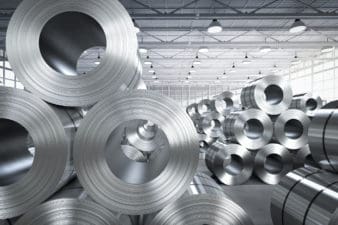Gold prices continue to linger around the $1,200 mark and the debate rages on between the bullion bulls and bears as to where the future lies. For the past five years, the bears have been right, and any bull that took a position in the miners over that time is looking at some ugly losses.
Is the downward trend finally coming to an end?
It’s true that gold’s safe-haven status has lost some of its shine in recent years, especially in the U.S., as global equity markets continue to remain resilient in the face of serious political and financial threats. At the same time the strong U.S. dollar has provided little incentive for Americans to move into gold.
The attitude in the U.S. could soon change. Greece might send Europe down a road nobody wants to go; China’s massive property bubble still hasn’t popped; and the entire Middle East is at risk of becoming one massive war zone. A bad turn in any one of these situations could set off a stampede back into gold.
As for the gold miners, their world has also changed. The focus today is on profitable growth rather than growth at all costs, and many companies are working hard to clean up their balance sheets and reduce operating expenses. Some of the miners are actually getting to the point where they can be cash flow positive at these low price levels.
This is why contrarian investors are starting to kick the tires on some of the industry’s beaten-up names.
Barrick Gold Corp. (TSX:ABX)(NYSE:ABX) and Kinross Gold Corporation (TSX:K)(NYSE:KGC) are two of the companies that have endured the most pain. Let’s take a look at the current situation to see if they deserve to be on your radar.
Barrick Gold
Barrick’s big challenge lies in its ability to reduce costs and address its massive debt load. Management appears to be making progress on this front, but Barrick is racing against the clock.
The company has US$13 billion in debt. Fortunately, only about $1 billion is due in the next three years. The company recently announced two deals to unload non-core mines for US$850 million. Barrick is also working hard at streamlining its operations, including a move to cut head office staff by 50%.
Barrick has ample liquidity, huge production, and its all-in sustaining costs (AISC) are below US$900 per ounce.
The company also expects to deliver positive free cash flow this year and says its AISC should continue to drop over the next two years.
Kinross
Kinross has battled hard to right the ship after its disastrous US$7.1 billion deal to acquire Redback mining back in 2010. A large part of the Redback purchase has been written off and Kinross is finally standing on solid ground again.
The company reported better-than-expected Q1 results and is producing enough cash flow to easily cover its capital projects. Production is on track to meet guidance and the balance sheet is actually quite healthy. Kinross finished Q1 with more than US$1 billion in cash and cash equivalents.
Which should you buy?
Investing in any miner right now requires the belief that gold prices are headed higher. Both of these companies have sold off so hard that any significant improvement in the price of gold will send them rocketing higher.
Kinross is trading for less than $3 per share right now and roughly $1 of that is sitting on the balance sheet as cash. The company could easily double on a surge in bullion prices and it is starting to look like a possible takeover target.
For long-term contrarian investors, Barrick is a high-risk, high-reward bet and investing in Barrick right now means you believe management is going to make good on its turnaround promises.





